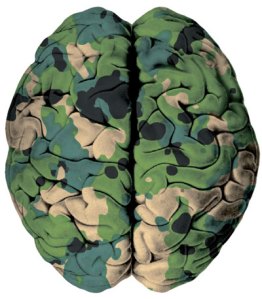Malcolm Dando thinks we neuroethicists are not talking enough about the problem of dual-use: the simultaneous application of advances in (neuro)science to both improving society as a whole and to assist military capabilities. I think he is right. In an article in the Bulletin of the Atomic Scientists, Dando tells us that,
“in regard to the question of dual-use the advances in neuroscience have already seen application in the Russian use of some form of fentanyl, a powerful painkiller, as a novel incapacitating chemical agent to break the 2002 Moscow theater siege. Moreover, Russia is unlikely to be the only state interested in the development of such new agents, given the changing nature of modern warfare. One can only hope that neuroethicists will begin to pay some attention to the clear and present danger that the hostile misuse of modern neuroscience could lead to the erosion of the prohibition of chemical weapons embodied in the Chemical Weapons Convention and make a valuable contribution to the discussion of this problem in the run up to the 3rd Five Year Review Conference of the convention in 2013. For example, the peaceful purpose defined in Article II.9 (d) as “Law enforcement including domestic riot control purposes” could be read to mean that ordinary domestic riot control agents are a sub-category of a larger group of chemical agents that can be used legally. On this reading, novel so-called non-lethal chemical incapacitating agents based on advances in modern civil neuroscience could be developed and used. Yet all the evidence is that use of such agents would be very difficult to distinguish from the use of lethal agents; recall that more than 120 of the hostages in the Moscow theater siege were killed by the chemical agent. Such developments by states could undermine the whole prohibition and lead to a downward spiral of misuse. Therefore, this issue of dual-use should be of great concern to neuroscientists, and particularly neuroethicists, who wish to help protect civil neuroscience from such dreadful distortion of its intended purpose.”
The truth is that other than Jonathan Moreno, few neuroethicists have applied serious scholarship to the issue of dual use. Of course, it is a simple matter to just say no: neuroscience should only be used for improving the quality of human life. But frankly, that is too simplistic. One can take a rather strong position against the use of neurobiological tools for torture and killing, but there are some very challenging grey zones as well. The one that springs to mind most readily is the idea of developing ‘calmants’, agents that might incapacitate an enemy briefly, allowing them to be captured without any loss of life. As recounted in Dando’s piece, the Russians used fentanyl as an incapacitating agent to end the 2002 siege at a Moscow theatre; the consequences were disastrous, with more than 120 people killed. Of course, fentanyl is a very potent fast acting narcotic that has been around since the 1060′s. Worrying about fentanyl’s use as a ‘calmant’ is in some ways akin to worrying about methylphenidate as a cognitive enhancer: both agents have been around for a while, and while some people (college students and the Russian government come to mind) might think they are useful in one arena or another, they are really crude tools. But if a better agent were to be developed, would such incapacitation be unacceptable? Would allowing some forms of chemical warfare (there is really no other word for it) open the door to a whole new armamentarium that emerges from neuroscience laboratories? The only thing that I know for certain is that this is an area worthy of further debate.
Link to Malcolm Dando’s article
Image Credit: Nature
When suitably aerodynamic porcine objects develop enough lift to move independently through a stream of air.
Sunday, July 25, 2010
Neuroethics of dual-use « Neuroethics at the Core
Subscribe to:
Post Comments (Atom)

No comments:
Post a Comment